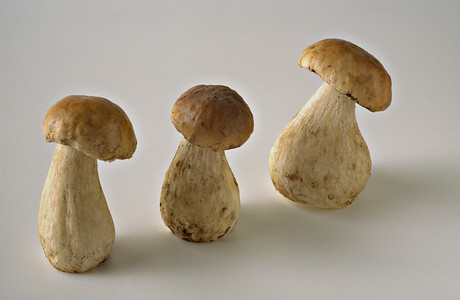What you can do with 50,000 tonnes of mushroom waste each week

In Europe, the Funguschain project seeks to obtain mushroom-based, high-value antimicrobial and antioxidant components from the 50,000–60,000 tonnes of mushroom waste generated each week. It is hoped that the innovative and sustainable compounds will have applications in a wide range of products such as antimicrobial and eco-friendly cleaning solutions for household products, bioplastics for bags, film and gloves, or enriched food supplements for the elderly and sportsmen.
Led by Dutch company BioDetection Systems, the project brings together a total of 16 partners including universities, research centres and companies from Spain, the Netherlands, Ireland, Germany, Italy, the United Kingdom, Belgium, Croatia, Sweden and Portugal.
The scientific committee of Funguschain is coordinated by University of Alicante NANOBIOPOL Group Director Alfonso Jiménez, who points out: “The project includes a four-year work and will lead to results that allow the integral valuation of mushroom residues and the resulting by-products.
“Our ultimate goal is to obtain high added value, sustainable and innovative compounds for cleaning products, enriched food supplements and bioplastics for bags, plastic films and gloves,” he added.
“The microwave-assisted extraction technique of antimicrobials, antioxidants, proteins, polyols and polysaccharides from the laboratories of the UA is being developed, which will be part of the subsequent processes for the cleaning, food and plastics sectors,” Jiménez explained.
Funguschain project is a new concept of biorefinery which will be created to valorise outcomes with a cascading approach, following these steps:
- Microwave-assisted extraction — a fast and reliable extraction technique based on improvement in extraction kinetics provided by heating induced by microwave radiation. Results will be molecules such as antimicrobials, antioxidants or polyols which will be applied in further processes for the cleaning, food and plastic sectors.
- Pressurised hot-water extraction — a powerful extraction technique using high pressures to maintain aqueous solvents in liquid state at high temperatures. Results will be bioactive proteins and polysaccharides that can be directly used as food supplements with enhanced texturising and prebiotic properties.
- Saccharification fermentation — a deconstruction methodology of the biomass into a sugar platform, which constitutes the starting point for the production of fermented biopolyesters. The biopolyesters obtained from treated biopolyesters will be used to formulate new bioplastic blends. Biopolyesters will be produced using the sugar platform to formulate novel bioplastic blends in compounding facilities for the plastic sector.
- Anaerobic digestion — remaining biomass will be dedicated to generate compost and biogas by anaerobic digestion. The result will be compost and biogas, which is produced by the breakdown of biodegradable waste inside a landfill due to chemical reactions and microbes, or as digested gas, produced inside an anaerobic digester.
The project, with a budget of €11 million, is co-financed by the Bio-based Industries Consortium under the European Union Horizon 2020 research and innovation program.
Six beverage trends predicted for 2026
Demand for customisation, 'protein-ification' and sustainable storytelling are some of...
Making UHT processing less intensive on energy
A nutritional beverages company was seeking a more sustainable way to produce UHT beverages using...
Tasty twist for chocolate alternatives
Food scientists develop two novel flavour-boosting techniques to transform carob pulp into a...








